Officially described as ‘truck, 1/4 ton, 4x4, SAS, Rover Mk 3; FV18063’, the first post-war SAS patrol vehicle was basically a modified 86in (2.18m) Series I cargo vehicle.
Mechanical changes were minimal, comprising little more than the use of higher-rate springs to enable the additional load to be carried. The doors and windscreen were removed and there was no canvas top or frame. A large auxiliary fuel tank was fitted inside the body, beneath a single rear-facing seat for the radio operator/rear gunner. The centre section of the front seat was removed, and the passenger seat was modified and repositioned. A radio was carried in the rear.
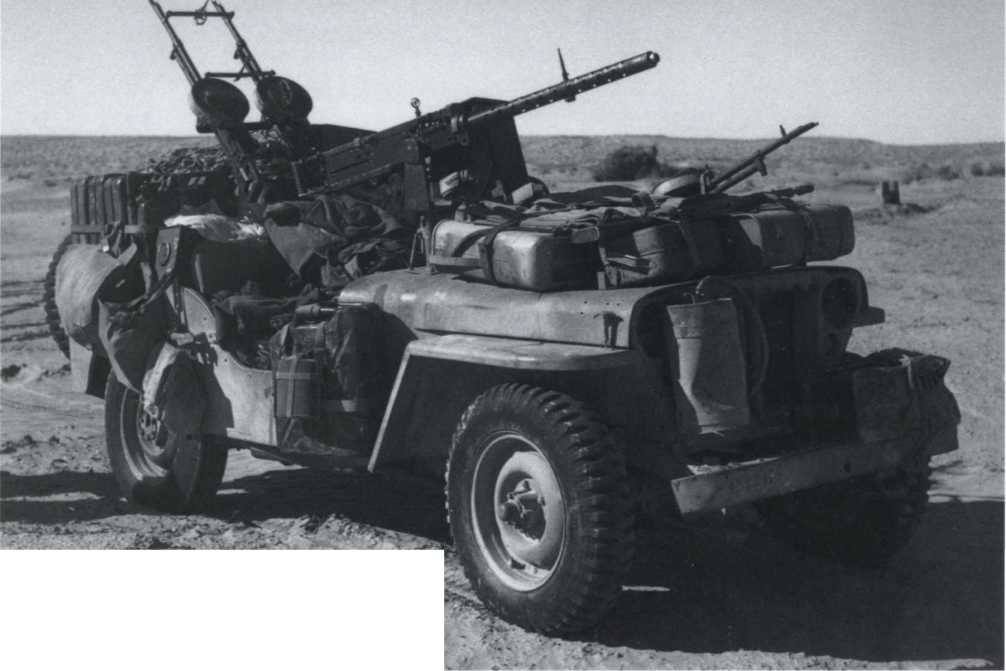
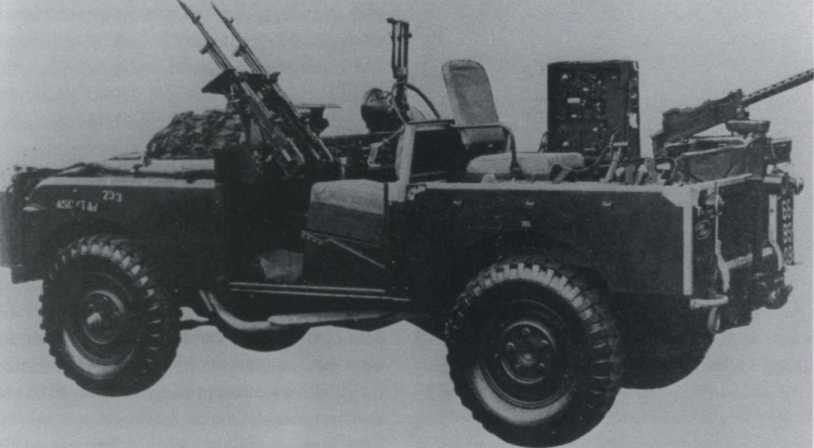
Above: Bristling with guns and hung about with supplies and personal kit, the Jeep used by the SAS in World War Two became the model for all special forces vehicles. fPW)
Left: The SAS used the converted short-wheelbase Land Rovers Series I for the same purpose in the mid-1950s. iPW)
Above and right:
Additional views of the SAS Series I.
The vehicle mounts twin-Vickers K machine guns at the front, and a.50 calibre heavy machinegun at the rear; a Bren gun is stowed beside the passenger seat. Note also the sun compass mounted on the centre of the scuttle. (PW)
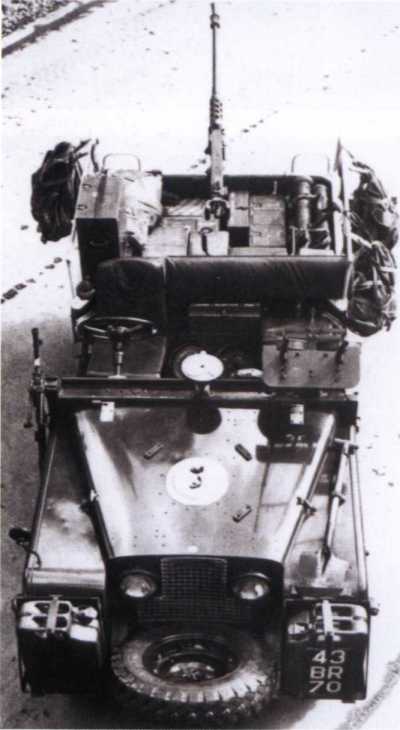
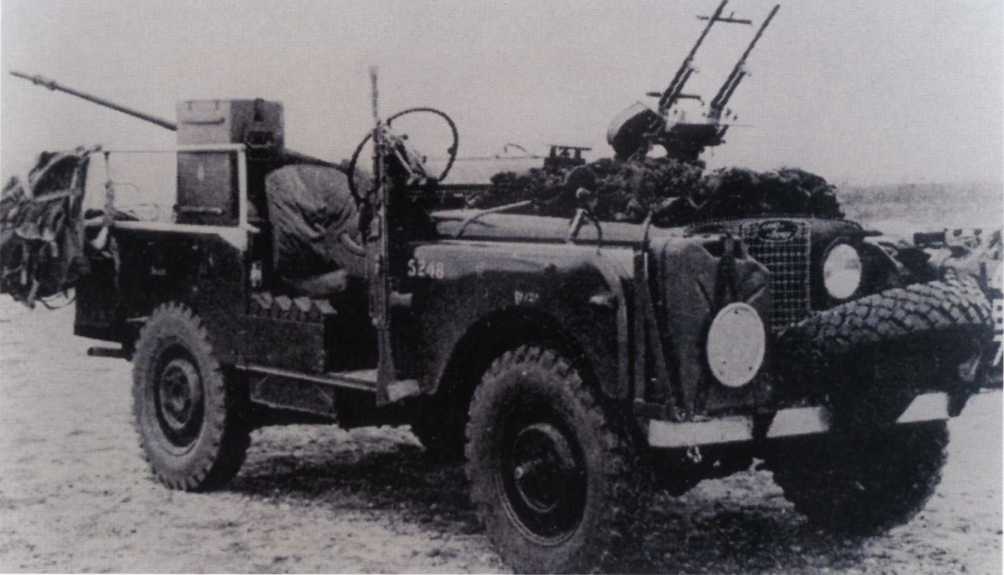
Standard armaments included two 7.62mm general-purpose machine guns (GPMG) on a coupled mount at the front, where they could be operated by the co-driver and a Browning.30 calibre machine gun at the rear. A third GPMG was normally stowed beside the driver.
The role dictated that considerable additional equipment needed to be carried, including jerrycans for fuel and water. These were stowed on the reinforced front bumper and inside the vehicle. Additional stowage bins and lockers were also fitted wherever practicable, and the spare wheel was carried on a bracket mounted on the front bumper.
The first vehicle was converted in April
1955, with the work being carried out in the Chertsey workshops of the Fighting Vehicles Research & Development Establishment (FVRDE). Two more were produced in January
1956, and a further six in February 1957. Automotive trials on the original conversion were conducted at FVRDE in late 1957, before the vehicle was returned to the War Office for air-dropping trials.
A number of 88in (2.24m) chassis were also converted to this role in a similar manner and remained in service until 1967, when the Series I
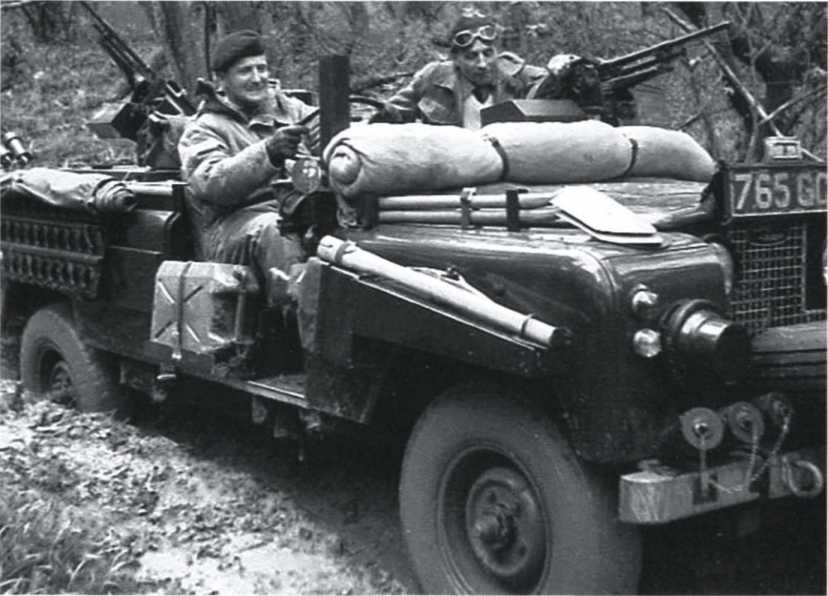
Left: Early Series ll*based ‘Pink Panther’ prototype undergoing trials with the SAS Regiment, probably photographed in 1968. (RA)
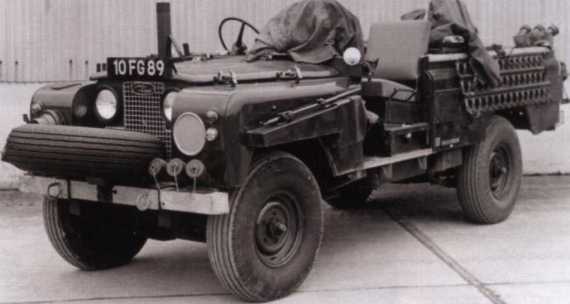
Was replaced by the long-wheelbase Series HA... the iconic‘Pink Panther’.




 World History
World History









